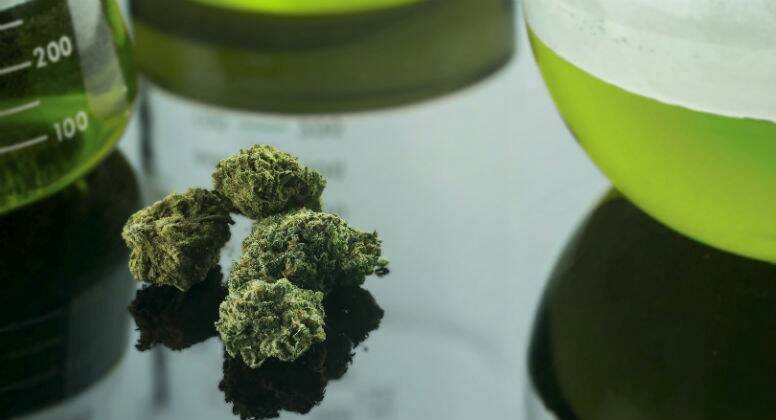
 Emerald Scientific is re-approaching the science of cannabis and helping to set standards along the way.
Emerald Scientific is re-approaching the science of cannabis and helping to set standards along the way.
The multi-faceted company is the first and only of its type. The California-based business was founded “to bring specific products to the market that no one else has,” said Emerald Scientific’s Director, Ken Snoke.
Snoke, who has more than 25 years combined experience in the biotechnology industry as a scientist and researcher, turned his sights to organic farming. While living just outside of Medford, Oregon, he described, he met many cannabis cultivators. “It became apparent that a lot of components of the cannabis industry needed scientific products.”
He discovered a niche in need of filling. In 2013, he founded Emerald Scientific to serve the industry’s previously unmet needs by delivering the supplies necessary for extraction, testing and packaging.
“Equipment didn’t exist to meet [these] needs. [We are] responding to the need of the industry,” Snoke noted.
The company operates under the motto of “the science of cannabis.” Scientist work alongside labs (among others) to set industry standards, work toward best practices and improve or validate methods already in use. This, Snoke said, improves results and workflow.
Emerald Scientific develops their own inventory of products. These high-quality materials are specifically designed for cultivators, laboratories, and businesses — which bring consistency to both the producers and consumers. The company provides a variety of equipment including (but not limited to) reagents, moisture analyzers, and columns used for testing potency, terpenes or heavy metals.
Emerald’s products are very technical in nature. But, you don’t have to be a scientist to use any of it as guidance is provided: technical support is made readily available through instructional videos, bulletins and customer service. “That is important to us,” added Snoke.
The company also develops custom products that meet individual state regulations. For example, he explained, a lab in Oregon may have different calibration requirements for pesticides or residual solvents (such as ethanol) than a collective in California.
“Traditional suppliers aren’t accustomed to the state-by-state needs,” he said, giving Emerald Scientific an advantage. In the future, the company hopes to continue to fill this gap.
According to an article published in National Geographic, titled “High Science,” the science of cannabis is experiencing a rebirth. More and more are turning to the plant for its medicinal value. As California voters recognized in 1996, and again in 2016, the field has much to offer. Emerald Scientific is here to build bridges, meet demands and provide scientific standards.
“We saw nobody else was providing these products and the needed technical support. The way our industry came out of the black market resulted in the development of a large industry without support,” Snoke added, “With legalization, it just blew the doors open. In most other markets, regulations developed along with the industry. For the cannabis industry, best practice in the lab and in production has been a big challenge. A lot of critical products were not available – we were in a position to spearhead, so we did.”
“We started originally selling exclusively to analytical test labs all around the country, and then more recently, selling to extractors and cultivators.” Snoke added that access to scientific materials for cultivators is essential for sex determination, strain identification, cloning, pathology testing, etc.
While all material must be tested by a third party test lab before sale, there are some instances where cultivators and extractors can gain critical information with in-house testing. “For example,” he said, “If a cultivator is trying to choose the best harvest time, lab results may take a week or more” In the meantime, the grower can miss ideal harvest time. With Emerald Scientific’s 420 Gas Chromatograph, the cultivator or extractor can determine potency information in just minutes.
Aside from their inventory, Emerald Scientific has developed the Emerald Test which consists of proficiency testing and interlab comparison. “These are programs that almost all other industries use to help labs increase their performance, and develop best standardize methods,” said Snoke.
At first, approximately 10 labs participated. Now that number is up to more than 50.
The test, determined by an advisory panel, is conducted twice per year; once in the spring time, once in the fall. According to the website, labs submit samples for testing, then “receive their individual results, and once analysis is complete, will receive the overall test results, so as to see how they performed in relation to their peers.” All data collected is confident, however the site added that “cumulative (anonymous) data of all participants will be used for a variety of analyses, and may be published in appropriate journals and/or websites. Labs that perform within a specific tolerance will be awarded an Emerald Test Badge, and all participants will be listed on the Emerald Test website.”
Through this, Snoke described, “We can see which methods works best or which labs aren’t performing well.” Those who perform well often help others improve.
In correlation with their commitment to industry advancements, Emerald Scientific launched the Emerald Conference in 2015 — another first for the industry. The annual event gathers professionals from all fields. “Because there is no federal oversight, the best way to [set standards] is to bring people in our industry together [with] people from parallel industries,” such as those who specialize in food science, Snoke added. These experts offer experience and knowledge, and by learning from them, better practices can be integrated into the cannabis market. “We don’t have to re-invent the wheel for this,” Snoke said.
The team at Emerald Scientific believes in the cannabis industry, and their contribution for to it. “We can’t develop successfully without safe and dependable products,” he said, “Those are just basics that we need to assure.”
Written by Melissa Hutshell



Leave a Reply